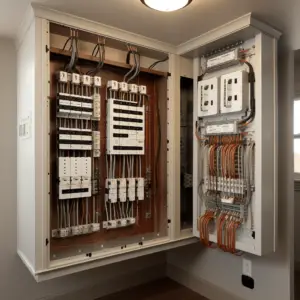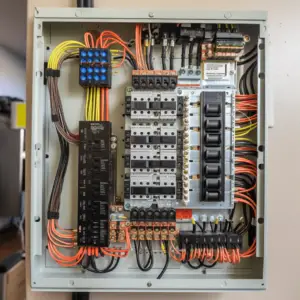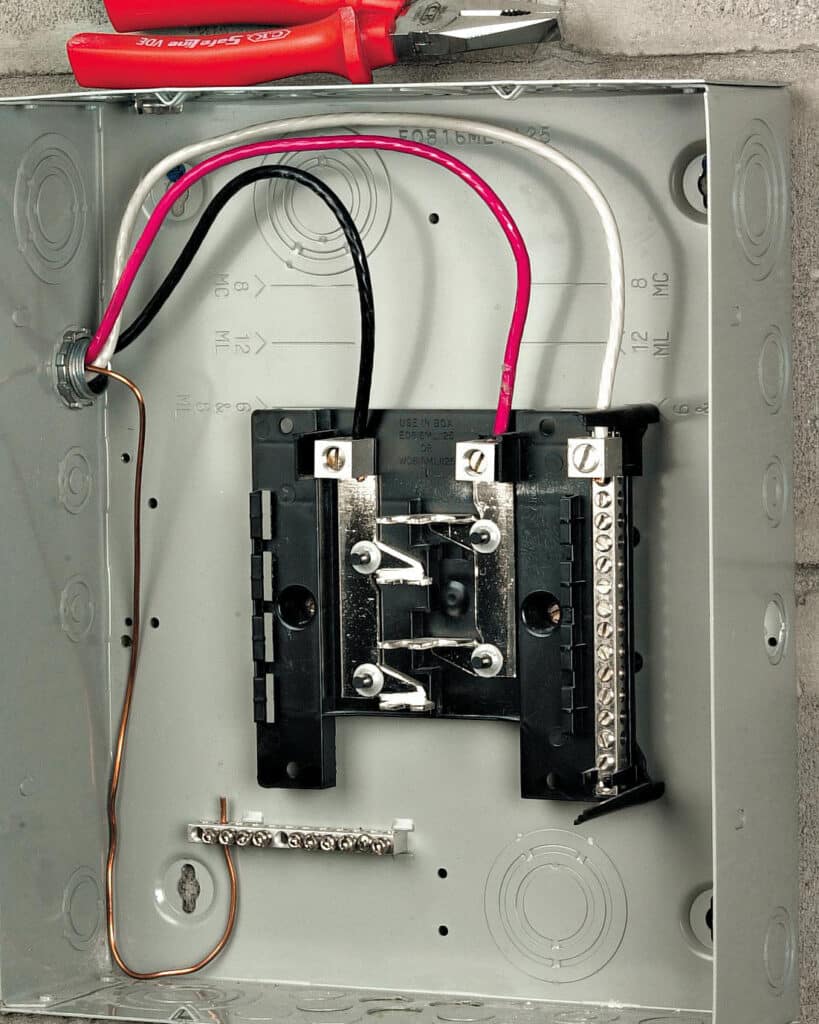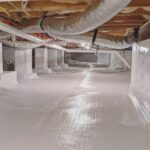Subpanels, The main circuit breaker box, often referred to as the main service panel, is the heart of any home’s electrical system. This is the point at which the utility company’s power feed enters your house from the meter and where all of the power is supplied to the house’s different branch circuits. The main circuit panel is found in every home.
A subpanel is a smaller service panel that supplies electricity to a specified portion of your house or other buildings on your property. It functions as a satellite circuit breaker panel with its own set of breakers. The main service panel feeds the subpanel.
This quick guide will walk you through everything you need to know about a subpanel.
Table of Contents
Does a Subpanel Need a Ground Rod?

Whether or not you will need to ground your subpanel depends on where it is located. If your subpanel is situated outside your house, it will require its ground rod and a ground wire back to the main building. However, if your subpanel is in the same building as the main panel, it will not require a ground rod. Only a ground wire will be necessary in such a case.
How Do You Ground a Subpanel?
The rule for grounding a subpanel states that the terminal bar for the equipment ground, also known as the ground bus, shall be electronically connected to the enclosure when grounding a subpanel. This rule aims to provide a channel to the service panel and transformers in the event that the subpanel enclosure experiences a ground fault.
What Are The Advantages of a Subpanel?
Subpanels are often used in systems because they save time, save room, and make things easier. Most of the time, subpanels are used to extend the wires for a few branch circuits to a certain area of your home or building that is a few meters away from the main panel. You can put a subpanel in a shed, a barn, or an addition to a room. The idea is to run a single set of feeder wires from your main panel to a subpanel, where the power will be split into several branch circuits that serve that building or part of the house. The wires that run from the subpanel can power lights, appliances, and outlets, just like the main service panel.
panel parts, The benefit of this is that you can control the circuits from a more handy place instead of having to go back to the main service panel, which may be quite far away. For instance, if you have a garage with a workshop, power tools may sometimes trip your circuit breakers. Subpanels is much easier to restart them from the garage subpanel than from the main service panel.
When all the breakers in your main service panel are in use, a subpanel can be a good way to add more circuits. For example, you can connect a single 60-amp breaker to a subpanel and split the 60 amps into several smaller circuits.
Lastly, a subpanel can save time and money by cutting down on the number of “home runs” back to the main panel. Running four or five separate circuits from a faraway place back to the main panel will cost you more in materials and work than running a single high-amperage circuit and then splitting it into smaller circuits from the subpanel.
How Do You Connect a Subpanel?
2 hot wires linked to a 240-volt double-pole breaker in the main panel are required to connect a subpanel. A ground wire and a neutral wire are also necessary. The cable utilized for this run is a 3-wire cable with a ground.
The cable run should then be connected to a 240-volts main lug on the subpanel. The main lugs will then feed electricity to 2 hot bus bars. Individual circuit breakers connected to the bus bars will supply power to the subpanel’s branch circuits.
What Happens When You Mix Hot and Neutral Wires?
Mixing hot and neutral wires leads to reversed polarity. This happens most often when the hot and neutral wires are flipped around an outlet or when the hot and neutral wires are flipped upstream from the outlet. Reversed polarity can cause a shock hazard, although it’s usually simple to fix. Any $5 electrical tester will detect this condition if you have a correctly grounded three-prong outlet.
Why Are Grounds and Neutrals Separated in a Subpanel?

Shock, corrosion, and fires are typical problems caused by not separating the ground and neutral wires from the subpanel.
Ground wires aid in preventing short circuits, which can lead to shock and house fires. When there are loose or frayed wires, a short circuit occurs. However, when there are several electrical faults or a large amount of electricity flowing through these defective cables, adding a third wire, the ground wire, to the pathway increases the chance of these catastrophes. As a result, the ground wire must have an absolute path free of the neutral wire’s electrical current to prevent short circuits readily.
Corrosion can occur as a result of poor subpanel bonding. This is because high electrical currents from the hot ground and neutral wire can hasten the eroding of metal pipes or buildings.
Can You Daisy Chain Subpanels?
It is possible to daisy-chain a feeder from the main service panel to a subpanel (subpanel A) and then run another feeder from the subpanel (subpanel A) to another subpanel (subpanel B).
Is It Possible to Run a 100 amps subpanel off a 100 amps Main Panel?
Running a 100 amp subpanel off a 100 amp main panel is not against the code. However, it is critical to ensure that the wire size and the installation process are correct. A four-wire service is required for a subpanel: two hots, one neutral, and one ground.
Can You Feed 100 amps Subpanel with a 60 amps Breaker?
A 60 amps breaker can feed a 100 amps subpanel. This is because your subpanel should always be rated above your breaker size.


